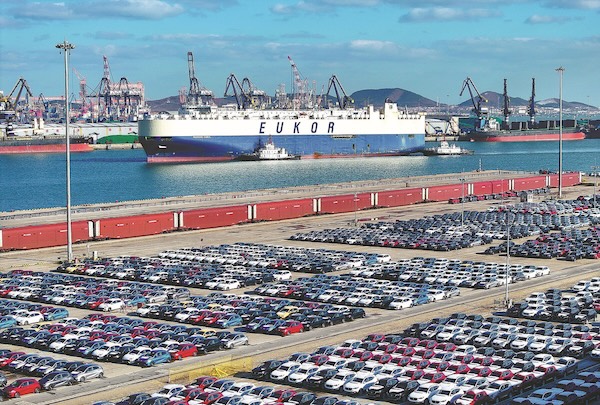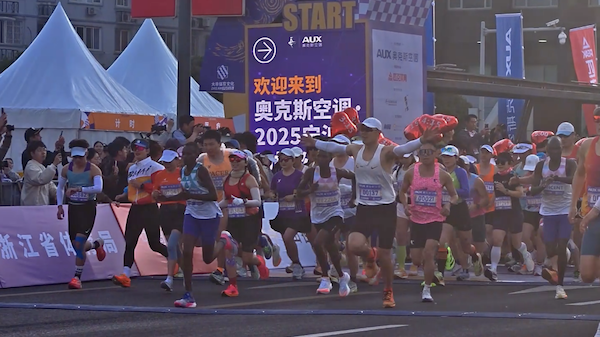BRI trade boosts exporters' profits

Cars bound for Belt and Road destinations await shipment in Yantai Port, Shandong province. ZHANG JINGANG/FOR CHINA DAILY
China's trade with other countries and regions participating in the Belt and Road Initiative will keep growing in 2025, fueled by many emerging economies' surging demand for products to meet their need for green transformation, consumption upgrade and industrialization, said market watchers and businesses leaders on Thursday.
They noted that this trend is also driven by Chinese exporters' efforts to diversify markets and reduce risks linked to protectionism and "decoupling" attempts by certain countries, along with advancements in both regional connectivity and supply chain operations.
China's trade with other economies involved in the BRI grew by 6 percent year-on-year to 18.74 trillion yuan ($2.57 trillion) between January and November, said the General Administration of Customs.
Meanwhile, China's trade with the Association of Southeast Asian Nations rose 8.6 percent on a yearly basis, while its two-way trade value with Latin America and Africa increased 7.9 percent and 4.8 percent year-on-year, respectively.
Benefiting from the tangible growth of the BRI, favorable conditions created by the New International Land-Sea Trade Corridor and China-Europe freight train services have all provided strong support for China and its partners involved in the BRI to boost their trade ties, said Wan Zhe, a professor at the Belt and Road School of Beijing Normal University.
Countries in the Middle East and Southeast Asia, in particular Saudi Arabia, the United Arab Emirates, Indonesia and Vietnam, are also experiencing strong demand for goods and infrastructure projects, providing Chinese exporters with opportunities for growth, said Wan.
Lyu Yue, a professor at the Academy of China Open Economy Studies, part of the University of International Business and Economics in Beijing, said China has nurtured a number of innovative companies and industrial clusters with strong international competitiveness. They have been transitioning toward green growth in recent years.
She said that the increase in new orders from other BRI economies will not only lead to new growth points for Chinese manufacturers, but also propel them to invest in new plants, service centers and innovation facilities in markets involved in the BRI.
Huzhou Sany Loader Co Ltd, a Huzhou, Zhejiang province-based equipment manufacturer, has been heading in that direction. The company began to export electric-powered loaders to BRI markets, specifically to Indonesia, Malaysia and Brazil, since last year. The average price of each unit is around 1 million yuan, which is twice the price of traditional diesel loaders.
"Our calculations show that the operating cost of electric loaders is about one-third to one-quarter that of diesel loaders, bringing significant savings for users," said Gao Pengfei, head of the company's research and development unit.
"Our export growth will focus on electrified products in the coming years," said Gao, stressing that it is practical for Chinese manufacturers to expand their sales channels in more emerging markets to hedge against the risks brought forth by protectionism.
Amphenol High Speed Technology (Nantong) Co Ltd, a Nantong, Jiangsu province-based wire and cable manufacturer, shipped a batch of cable worth 1.35 million yuan from its plant to Vietnam by trucks earlier this month. This is the 198th batch of cables exported by the company to countries participating in the BRI this year.
The company exported 1.45 billion yuan of wire and cable products during the January-November period, jumping 190 percent year-on-year. More than half of its exports were shipped to BRI markets, said Nanjing Customs.
The ongoing reshaping of the global supply chain has created new opportunities for Chinese companies to align their capabilities with evolving market needs, said Hu Weizhong, the company's general manager.
zhongnan@chinadaily.com.cn

 Voices from starting line
Voices from starting line
 China welcomes global travelers with open arms
China welcomes global travelers with open arms
 Kharitonova's running story in Ningbo
Kharitonova's running story in Ningbo



